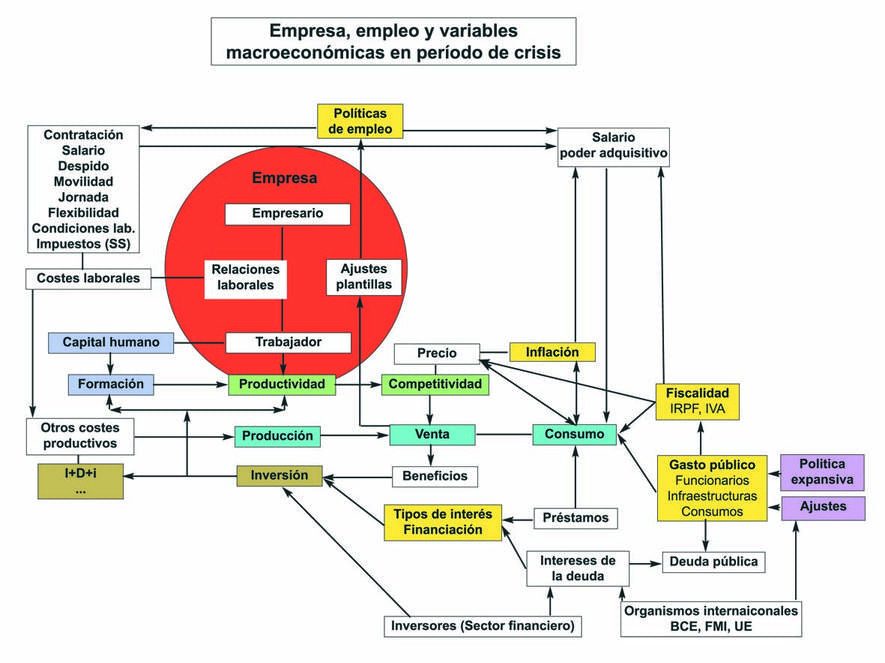
Within the economy there are different sectors that encompass various activities. The primary sector transforms natural resources into raw materials for the secondary sector, which is industry. There, raw materials are transformed into consumer products. But what is the tertiary sector? This is related to all those activities that have to do with the transformation of services of material or non-productive goods. In other words: Sand it is responsible for the generation of services whose purpose is to satisfy the needs of the population in any part of the world.
It is a fundamental productive sector in the current system. It includes other subsectors such as commerce, tourism, finance, telecommunications and even some public services. Paul Krugman, an award-winning economist, believes that The drop in productivity in the service sector and the difficulty involved in improving it is the main cause of the stagnation of many countries with respect to their living standards. If you are looking to know more about the tertiary sector, its functions and its composition, do not hesitate to continue reading.
Functions of the tertiary sector

Among the three sectors, the tertiary is the one that organizes, facilitates and directs the productive activity of the other two (primary sector and secondary / industrial sector). For this reason, the productive sector is contemplated. Despite that, within economic activity, its main functions are distribution and consumption.
When this sector predominates over the other two, an outsourcing procedure takes place in the more developed economies. It is a social and economic transformation that increases service activities, or that comes to be the same: tertiary sector. It is essential to emphasize that this sector is the one that occupies the highest percentage of the active population and the one that contributes a greater percentage to the GDP of the corresponding country. At the same time, the outsourcing procedure entails not only the growth of services, but also the diffusion of the way of working in the tertiary sector to other sectors.
Composition of the tertiary sector
To answer the question of what is the tertiary sector, we must pay attention to all the subsectors that make up services. Truly, the largest percentage of the workforce belongs to services. Below we will see a link between the subsectors involved that together make up the tertiary sector:

- Leisure activities, culture, sports and shows. These include the audiovisual industries (music, film, video games). On the contrary, the publishing industry and graphic arts are part of the secondary sector.
- Financial activities: This is where banking, the stock market, insurance, and other stock markets come into play.
- ICT applications (information and communication technologies): Internet, computing.
- Trade: It consists of franchises, wholesalers, and retailers.
- Public function / public management: It consists of activities associated with community services, political representation, defense and security (police, firefighters, army, civil protection, etc.) and justice (notaries, lawyers, judges, etc.).
- Hospitality and Tourism.
- Media: They are simply the press, television and radio.
- Company services: Administration and management of companies, commercial promotion, consulting, economic advice, legal service, investment, technological service, etc.
- Personal services: Are those services related to the welfare state (education, dependency care, health, public services, hairdressing, etc.)
- Telecommunications: It consists of personal means such as telephony.
- Transport and communication

Related post:
Macroeconomic variables
Utility companies
Generally, when the infrastructure of a utility company is created, it is part of the secondary sector or industry. However, when they offer services to people, part of the tertiary sector is considered. The same business can be included in both without any problem. As a general rule, economies develop in progression to achieve a structure that is based above all on service. The first was the United Kingdom, which moved from an agricultural economy to an industrial one until it reached services as a base. Other economies, also called post-industrial economies, have already surpassed the English.
Service economy
When all viable economic activity is treated as a service, we speak of a service economy. To better understand this concept, let's take an example: IBM (International Business Machines Corporation) is a famous multinational company that manufactures and markets software and hardware. This company treats its business as if it were a service business. Although the computers it produces remain high-performance, it sees physical goods as a small part of the business solutions sector.

Many companies have found that the elasticity of demand for enterprise solutions is considerably lower than that for hardware. An identical change can be found with respect to the subscription pricing model. Overcome, manufacturers have a constant income due to current contracts, instead of receiving a one-time payment from the manufactured equipment.
As always, Industry in general is more open to competition and international trade than the tertiary sector. The effect that this produces is the increase in the competitive attacks suffered by the first industrial economies on the part of the countries that have begun to industrialize later. This is because production costs, especially labor costs, are considerably lower in the new industrial economies. Manufacturing contraction in major economies could be one reason they are so dependent on the service sector.
There are economists who warn that the services face certain special difficulties. One of them is one of the winners of the Bank of Sweden Prize for Economic Sciences in memory of Alfred Nobel, the American Paul Krugman. It points out that there are services that are not exportable and that many economic goods in the tertiary sector obtain modest gains in productivity due to the difference in industrial manufacturing.






